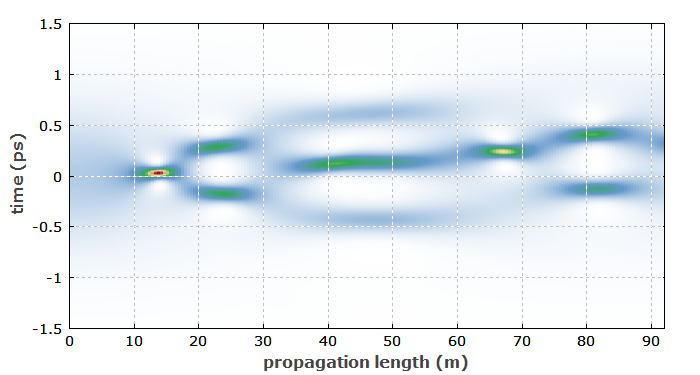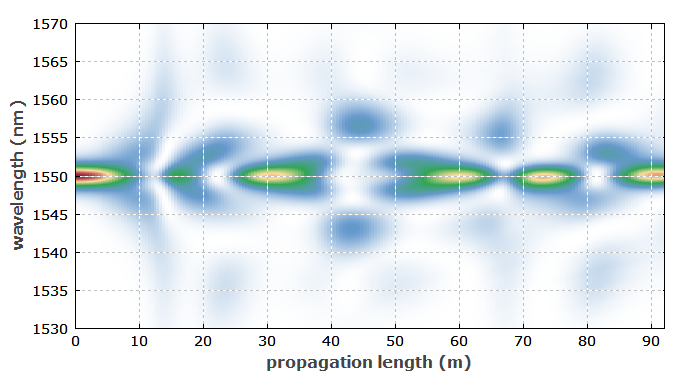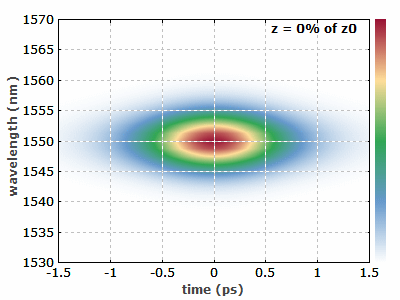
RP Fiber Power – Simulation and Design Software
for Fiber Optics, Amplifiers and Fiber Lasers
| Overview | Features | Speed | Model |
| Data | Interface | Demos | Versions |
Example Case: Higher-order Soliton Pulses
Description of the Model
Here, we simulate the evolution of higher-order soliton pulses in a fiber. The chromatic dispersion is calculated with the mode solver. As there is significant third-order dispersion, the soliton evolution somewhat deviates from that expected for a fiber with only second-order dispersion – particularly if the initial pulse is rather short. The simulation is done with an initial pulse which would correspond to a 4th-order soliton if there were no higher-order dispersion.
Results
Figure 1 shows the evolution of the temporal shape.

Figure 2 shows the same as a color diagram. Here, one sees more clearly that the initial pulse is not fully reproduced in the end. This is due to higher-order dispersion of the fiber. For longer pulses, this effect would be less pronounced.

Figure 3 shows the spectral evolution.

Figure 4 is an animated diagram, showing the evolution of the spectrogram of the pulse.

